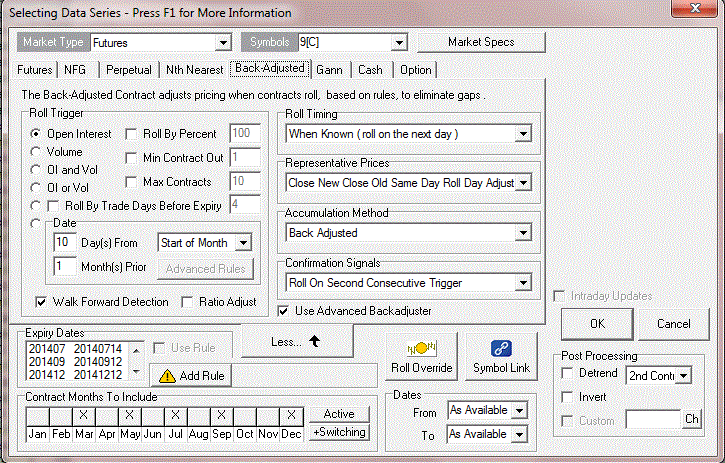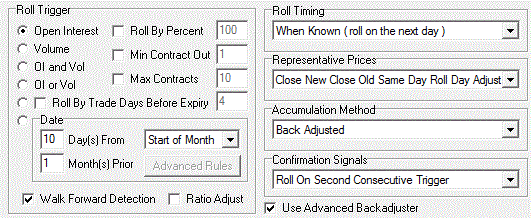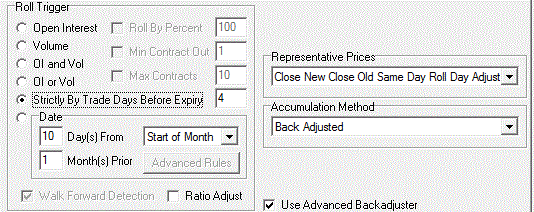From the center region of the Selecting Data Series screen, click the "Back Adjusted" tab, which is fourth from the left (see below). Our example shows a selection screen for CBT Corn, CSI #9, symbol C.
The user-defined settings for Back (and forward) Adjusted contracts are shown here:

Contract Months To Include


